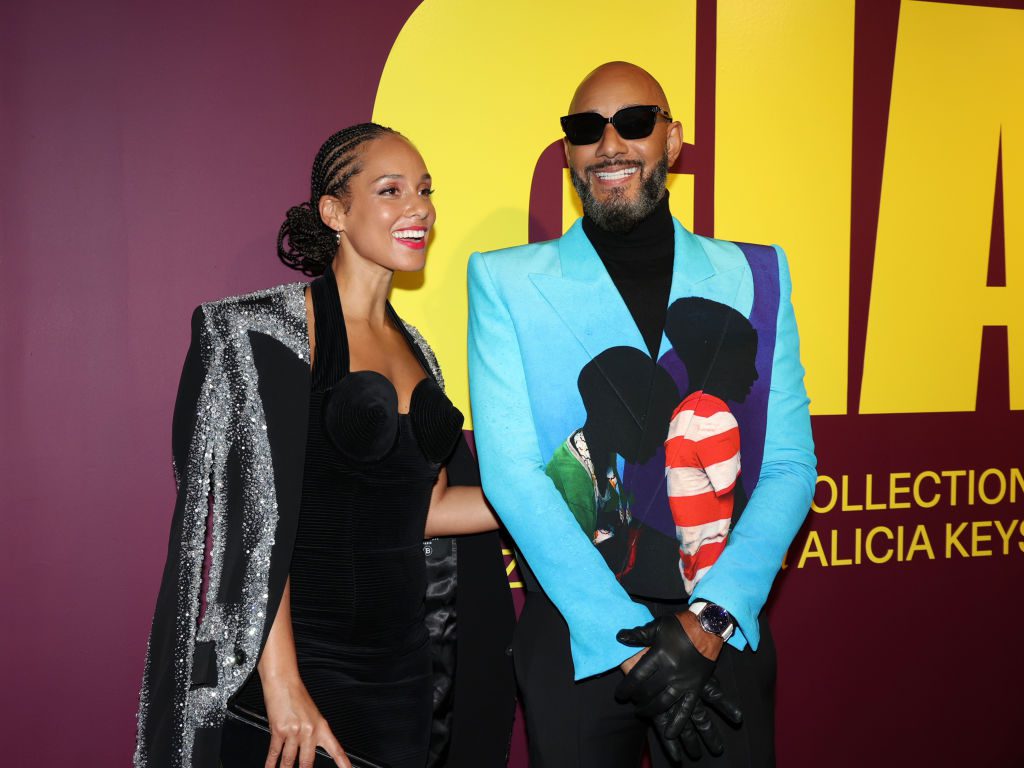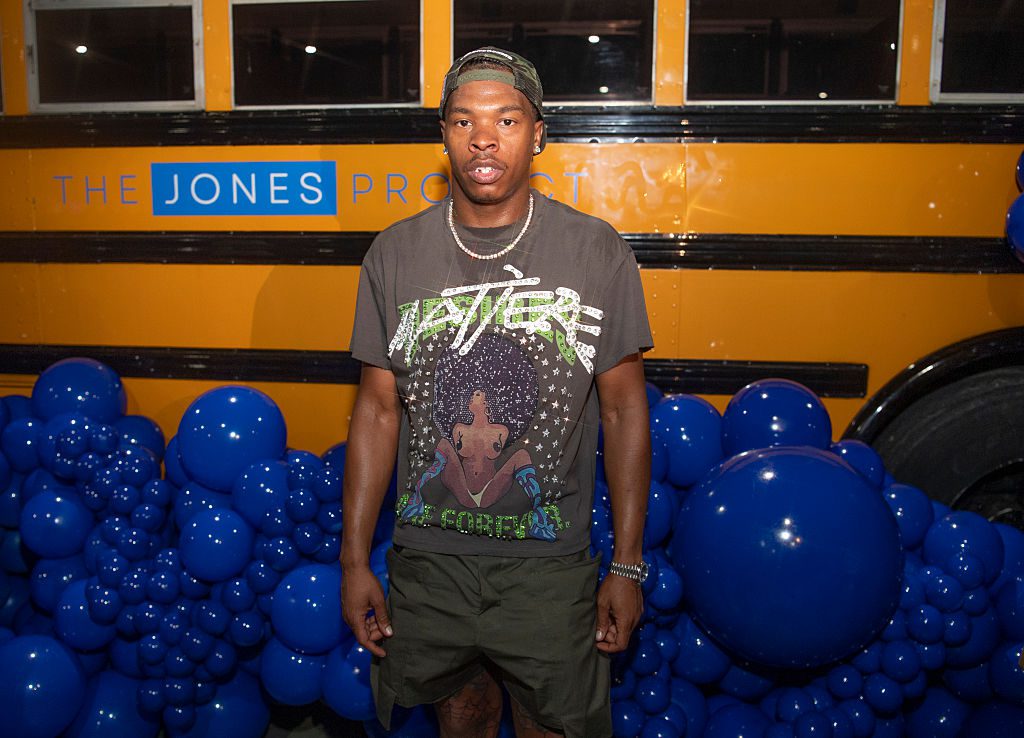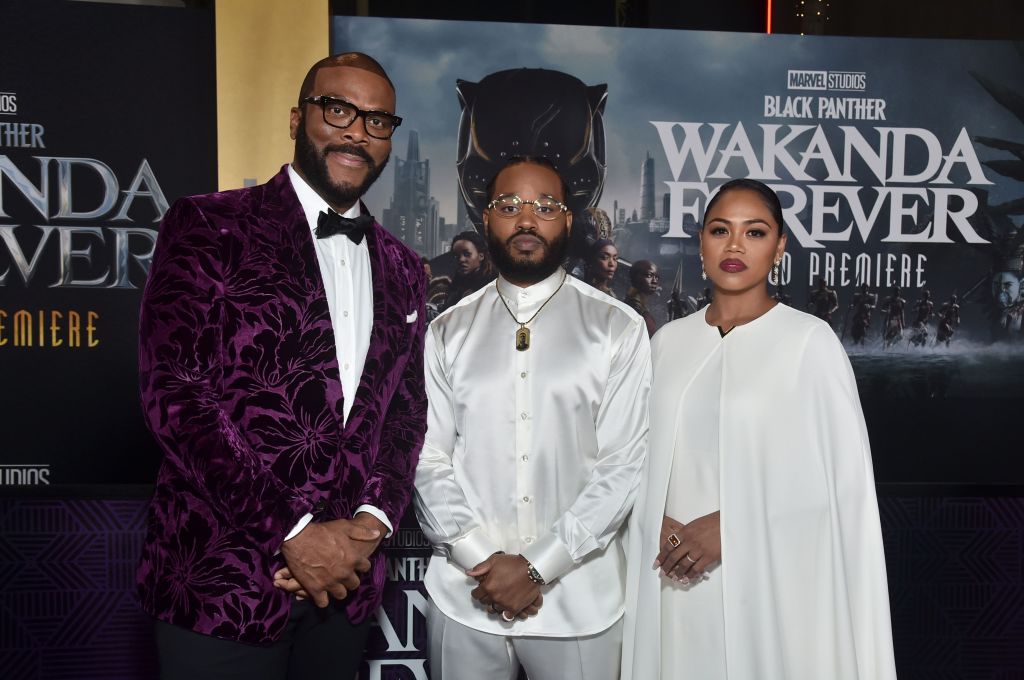Source: Shareif Ziyadat / Getty
Alicia Keys and Swizz Beatz announce their groundbreaking exhibition, Giants: Art from the Dean Collection of Swizz Beatz and Alicia Keys, will be going on a world tour since the success of its first showing at New York’s Brooklyn Museum. Read more and find out where their world-class art collection will travel next.
This historic move is the first of its kind. The Dean Collection is owned by musical and cultural icons Swizz Beatz (Kasseem Dean) and Alicia Keys. On Juneteenth, the Deans celebrated Black art by announcing that their world tour would be starting with a presentation at Atlanta’s High Museum of Art.
“Our mission has always been about making art accessible to everyone and showcasing these GIANT artists. We realized quickly that meant this collection had to travel to communities across the country and the world. We are so pleased that Atlanta and the High Museum of Art is the first stop on the GIANT tour,” the Deans shared in a joint statement.
The opening presentation being held in Atlanta is especially significant for Swizz as he mentioned his upbringing there.
“ATL is an important part of my story since I went to Stone Mountain High, Redan High and Open Campus. I started DJing parties as a kid at Atrium and Club Flavors too! So, bringing Giants to the High is an Art homecoming for me!” he added.
The exhibition is organized by the Brooklyn Museum, where it debuted in February. “Giants” will feature a focused selection from the couple’s holdings, spotlighting works by multigenerational Black diasporic artists, from 20th century legends such as Nick Cave, Lorna Simpson and Barkley L. Hendricks, to artists of a younger generation including Kehinde Wiley, Deana Lawson, Amy Sherald and Ebony G. Patterson, who are expanding the legacies of those who came before them.
“Giants” stands as a testament to the Deans’ ethos of “collecting and preserving the culture of ourselves for ourselves, now and into the future.” Through approximately 115 objects, including 98 major artworks, the exhibition will trace the evolution of an audacious and ambitious collection and explore the ways in which the featured artists and their work have grappled with societal issues, embraced monumentality and made a palpable impact on the art canon. In addition to paintings, photographs and sculptures, the galleries will include noteworthy examples of the Deans’ early non-art collecting interests, including albums, musical equipment and BMX bikes, along with related printed memorabilia.
The two are also paying homage to legendary artists in the “On the Shoulders of Giants” section of the traveling exhibit. It will feature work by artists who have left an indelible mark on the world. In her large, colorful abstract paintings, Esther Mahlangu reimagines the long-standing tradition of South African Ndebele house painting. The legacy of portrait and street photography are exemplified in the works of Kwame Brathwaite, Malick Sidibé and Parks, the last of which the Deans hold the largest private collection. These internationally renowned photographers documented moments of self-presentation and pride, as well as everyday life and sociopolitical milestones. They, along with artists such as Jean Michel Basquiat, Ernie Barnes and Hendricks, not only captured the moment in which they lived but also laid the foundation for current and future generations of artists.
The exhibit will have several sections. Another being, “Giant Conversations,” which explores how artists have always critiqued and commented on the world around them. The artists on display address a range of issues Black people have faced throughout the 20th and 21st centuries. Simpson’s “Tense” (1991) considers Black women’s self-representation within an environment where others often define that representation. Cave’s textured sculptures examine how Black people, particularly men, must assume costumes to conceal and protect themselves against violence. Other artists such as Jerome Lagarrigue and Henry Taylor present issues of protest and lack of visibility due to homelessness.
Other works on view explore Blackness and champion the beauty, resilience, distinctiveness, connection and joyousness within communities across the globe. Over a dozen photographs by Jamel Shabazz honor the everyday people walking the streets of New York from the 1980s to the present. Defying stereotypical depictions of his country by the West, Hassan Hajjaj captures Morocco’s female henna artists in one photograph on display. Sherald’s large-scale diptych portrays Baltimore, Maryland, dirt bike culture and the joyful freedom that comes with riding—a passion Swizz shares.
The “Giant Presence” section of the exhibition offers an impressive finale of monumental artworks. Nina Chanel Abney’s “Catfish” (2017) is a visual provocation about sexual and financial exchange between individuals in a colorful, almost cartoonish, setting. With his nearly 8-foot-tall “Big Wheel I” (2018), Arthur Jafa draws from Mississippi’s monster truck culture and histories of anti-Black violence, underscoring the coexistence of Black Americans’ joys and traumas. Paintings by Titus Kaphar and Meleko Mokgosi also use scale to emphasize powerful themes that resonate across history.
The exhibit has already garnered praise across outlets, critics and fans alike since its debut at the Brooklyn Museum.
“In a world that often overlooks the contributions of Black artists, “Giants” stands as a testament to their resilience, creativity, and unwavering spirit,” a quote pulled from BNN Breaking.
“In a world that often overlooks the contributions of Black artists, “Giants” stands as a testament to their resilience, creativity, and unwavering spirit.” – BNN Breaking
The “Giants: Art from the Dean Collection of Swizz Beatz and Alicia Keys” is curated by Kimberli Gant, curator, modern and contemporary art, and Indira A. Abiskaroon, curatorial assistant, modern and contemporary art, Brooklyn Museum.
Stay tuned for updates on their world tour.








